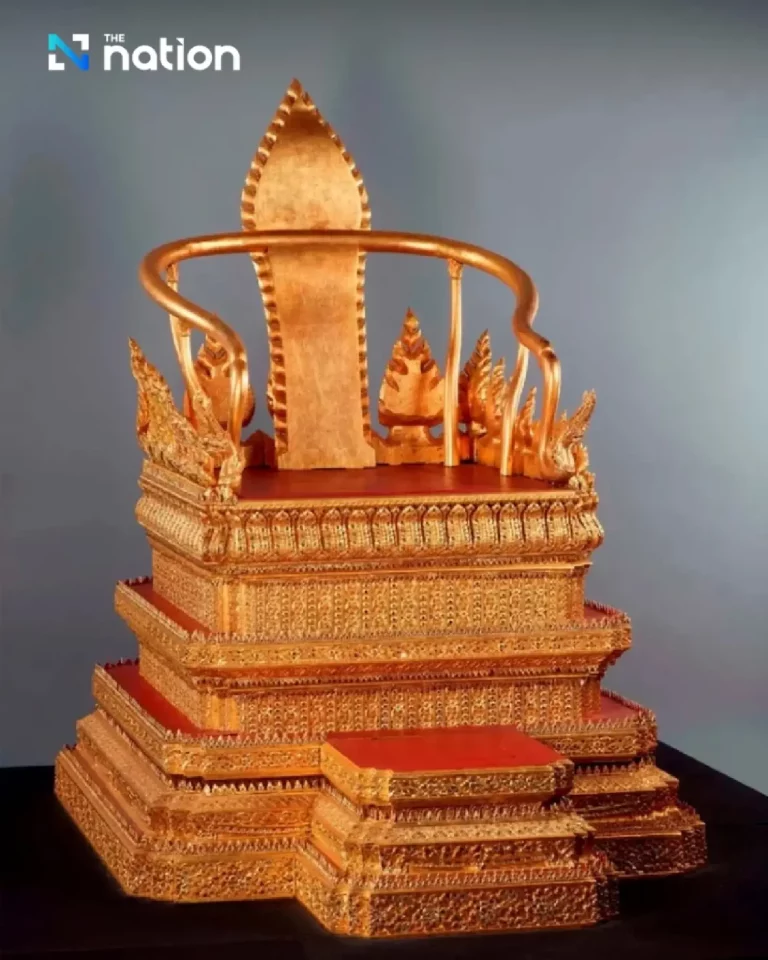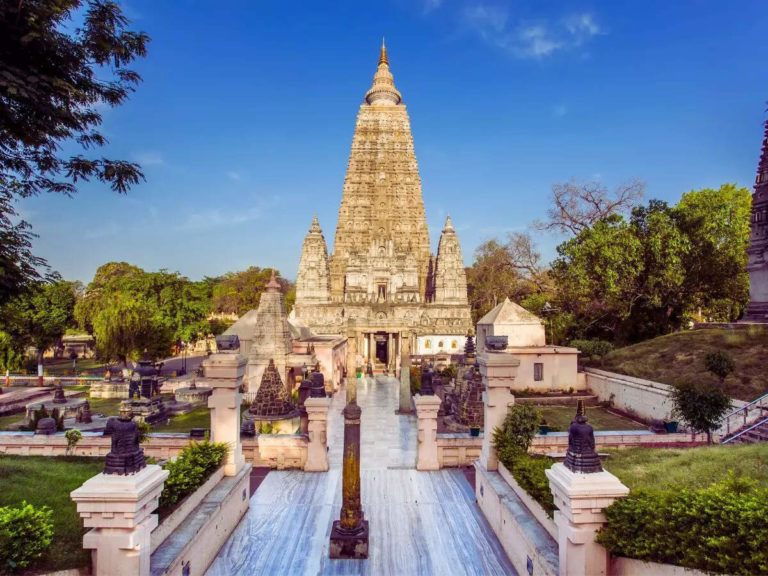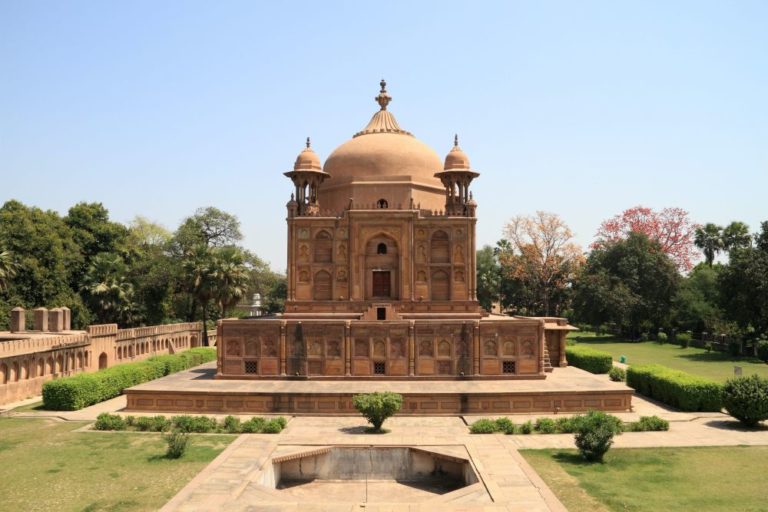In 1848, less than a decade before North India’s 1857 uprising, a Sri Lankan chieftain, Gongalegoda Banda, prepared to rise up against the British. To do so he asked for the blessings of the island’s protector deity: not the Buddha, but Vishnu.

But this Sri Lankan Vishnu was not the supreme Hindu deity familiar to us. Rather, just as 19th-century Indian Hindus saw the Buddha as an avatar of Vishnu, their Sri Lankan Buddhist counterparts had their own version of Vishnu, subordinate to the Buddha (as many Sri Lankans do even today). The evolution of this deity challenges many notions of South Asian religious nationalism. Borders and hierarchies among the gods were never as fixed as we might imagine.
Especially in the aftermath of the Sri Lankan Civil War, nationalists in Sri Lanka have tended to project “Sinhalas” as eternally Buddhist, aloof from mainland Indian trends. Nothing could be further from the truth. Just like England and France, Sri Lanka and South India have had fractious dynastic and military interactions for millennia.
These dynamics also extended into the religious and cultural realms. As historian Jonathan Walters writes in ‘Buddhist History: The Sri Lankan Pali Vaṃsas and Their Community’, part of the edited volume Querying the Medieval, 10th-century CE Sri Lankan kings claimed descent from the Sun. Meanwhile, on the mainland, the Cholas were doing the exact same thing. In fact, up to the 970s, Sri Lankan rulers were a major threat to Chola power. It was only at the end of the century that the Cholas decisively gained the upper hand.
Thereafter, with Tamil literary and cultural ideas on the ascendant, a period of “Tamilisation” set in in the north of the island, when many local communities absorbed mainland ideas. After the withdrawal of Chola power in the 1070s, a Pali Buddhist cultural renaissance took off, and Tamil-speaking communities, in turn, absorbed island ideas.
In his magisterial work The Buddhist Visnu: Religious Transformation, Politics, and Culture, religious studies professor John Holt assembled evidence from various Sri Lankan chronicles. Holt traced out a vigorous influx of mainland political culture in the 11th and 12th centuries. The Pali chronicle Culavamsa, he notes, praises the powerful Sri Lankan king Parakramabahu I for renovating and expanding both Hindu and Buddhist establishments in the erstwhile Chola provincial capital of Polonnaruwa. Such acts were standard for mainland kings, who tended to depict themselves as transcending sectarian boundaries. Earlier Lankan kings had instead focused their patronage on specific Buddhist monasteries.
But though mainland kings patronised widely, they also maintained a clear religious hierarchy. The Cholas, as historian Daud Ali writes in his book chapter ‘Royal Eulogy as World History’ (Querying the Medieval), claimed to be emanations of Vishnu. However, they imagined him as simply an agent of Shiva, their paramount deity.
Similarly, Parakramabahu I ordered the depiction of Vishnu as an attendant of the Buddha in the Gal Vihara, a rock-cut Buddhist complex in Polonnaruwa. This marked the first active attempt to appropriate Hindu deities into a subordinate position in the Sri Lankan Buddhist pantheon.
Around the same time, as outlined by historian Douglas Ober in Dust on the Throne, mainland Vaishnavite texts were claiming that the Buddha was an avatar of Vishnu. These processes unfolded independently in different parts of South Asia, and with similar political motivations — what might appear to be tolerance is, in fact, state-driven religious politics at work.
In the 13th century, the Sri Lankan prince Virabahu managed to defeat the invading Malayan king Chandrabhanu. Immediately after, according to the Culavamsa, he went to Devinuvara, in the south of the island, to give thanks to an ancient god embodied in an idol of red sandalwood: Upalvan. This is the name by which Sri Lankans known Vishnu today, but as of the 13th century the god had his own rich mythology.
According to Holt (The Buddhist Visnu), Upalvan was most likely an indigenous deity, appearing in some of the oldest Buddhist chronicles, including the Mahavamsa of the 5th century CE. Here, he was described as a “lotus-hued” god, who helped the island’s earliest colonisers battle with nature-deities and settle down.
By the 15th century, following the Pali Buddhist cultural renaissance, and a period of interaction with Tamil-speaking kingdoms in the north of the island, Upalvan assimilated aspects of many Hindu deities. He acquired what Holt calls “a devastatingly powerful war-like image”. According to the Tisara Sandesa, a text from this period, a Buddhist monk in Devinuvara propitiated the god with praises such as “the majestic flames of Upalvan have pierced the heads of enemy kings… those flames pierced the hearts of their wives and were reflected as red rays in their eyes”.
In the linguistically and politically fractious landscape of the 15th century, the god had become politically significant. Other Sandesa texts from the period, writes Holt, requested Upalvan’s protection for armies, ministers, and monks. Yet Upalvan was not a supreme god, granting moksha (liberation) to devotees. He only granted kings power and protection, so that they might establish the Buddhist dharma (cosmic order). He was multifaceted, many things to many people. For instance, when the Ming Chinese admiral Zheng He came to Sri Lanka in the 15th century, he made a dedication to Upalvan, referring to him as the future Buddha Guanyin, or Avalokiteshvara.
Although Devinuvara’s Upalvan received lavish patronage from hopeful local kings, disaster struck the shrine in the 16th century. According to one legend, the Portuguese sacked the temple. Other accounts claim that the red sandalwood idol was taken north, to Alutnuvara, Kandy, Dambulla, Gadaladeniya, or Hanguranketa. All of these were 17th and 18th century centres of Upalvan worship.
But by that time, he was no longer called Upalvan. With the decline of Devinuvara, his older mythology was forgotten, and he became identified with Vishnu.
In the Nayaka kingdom of Kandy, a truly extraordinary melding of mainland and island, Hindu and Buddhist, took place. The Kandy rulers were closely related to the mainland’s Madurai Nayakas, who spoke Tamil and Telugu. During the reign of Kirti Sri Rajasimha of Kandy in the 1750s, poetic works such as the Satara Waran Mal Yahana and Satara Dewala Devi Puvata described Vishnu as one of the island’s four guardian deities, and as a bodhisattva—a future Buddha! His Puranic feats and avatars were repurposed into Sri Lankan myth. In his form of Mohini, he is described as the mother of many Sri Lankan deities. He stands alongside Buddha on the night of his enlightenment.
Propitiated in rituals across Kandyan territories, and entering mainstream Buddhist liturgy, Vishnu was believed to help the Kandy kings in their wars against the Dutch.
Indeed, when the Sri Lankan rebel Gongalegoda Banda performed his ritual to Vishnu in 1848—as we saw in the beginning of this column—he claimed to be a reincarnation of the Kandy king Kirti Sri Rajasimha. His rebellion was not successful, but the Sri Lankan appropriation of Vishnu certainly was. To this day, though controversial, Vishnu in Sri Lanka is a future Buddha, just as in India, Buddha is a former Vishnu.
Anirudh Kanisetti is a public historian. He is the author of Lords of the Deccan, a new history of medieval South India, and hosts the Echoes of India and Yuddha podcasts.




